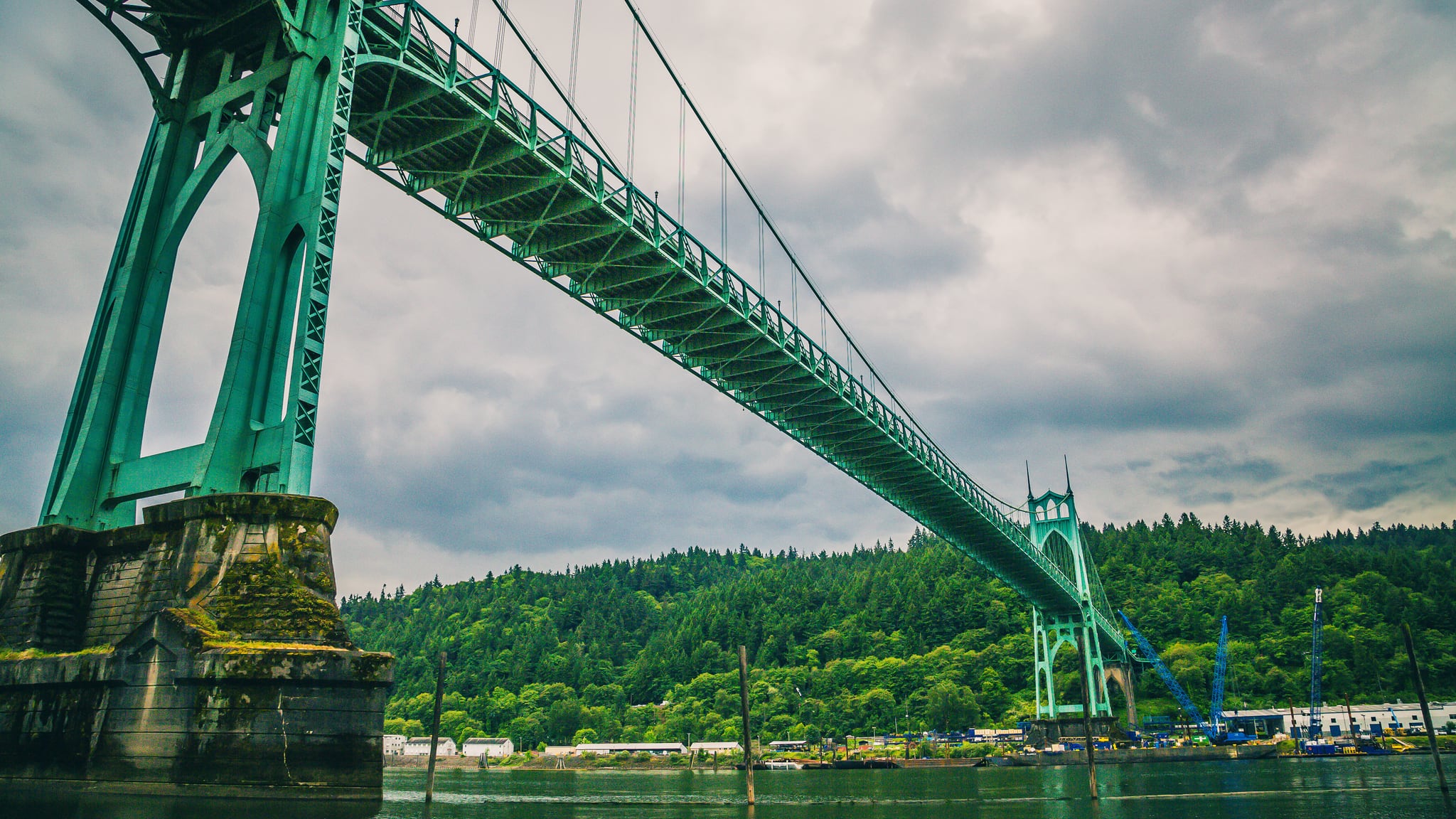I was just wondering about the many Oregon bridges (Astoria-Megler, Yaquina Bay, St. Johns) that are painted in a distinctive patina green color. Is it a certain type of paint that's best suited to the Pacific Northwest's climate? Is it purely aesthetic? —Grand in Green
We live at a luxurious moment in history. Until about 150 years ago, a column like this one would have been too full of questions like, "When will the plague end?" and "What was food?" to indulge such idle whimsies as "Why are bridges green?"
And while the apocalypse isn't (necessarily) imminent, it couldn't hurt to enjoy this time, when one's to-do list is mostly stuff like "yoga with Susan" rather than, say, "scavenge ruined city for weapons," for as long as it lasts.
But one luxury we do not have is the right to ask the same question of multiple news outlets at the same time. If I learn that Oregon Public Broadcasting's lush, 1,500-word photo essay on "Why Are Bridges Green?"—the one that appeared an hour before my deadline—was inspired by you, Grand, I'm going to kick your ass from one end of the lushly tinted Yaquina Bay Bridge to the other.
According to bridge historians (a type of person which, after the apocalypse, will appear just below "humor columnist" on the list of "People It's Totally OK to Eat Now"), green was chosen for the St. Johns Bridge by its designer, David B. Steinman, for aesthetic reasons.
Shortly thereafter, Conde McCullough, bridge unit head for the Oregon Department of Transportation, received a design award for the John McLoughlin Bridge spanning the Clackamas River. Unfortunately, the illustration on which the award had been based showed the (actually black) bridge painted green. McCullough ordered the real bridge painted green to match and pocketed his award. It's good to be the king.
McCullough went on to build lots more bridges in Oregon and painted them all green, which is the answer to your question. Was he inspired by Steinman's choice? He'll never tell.
